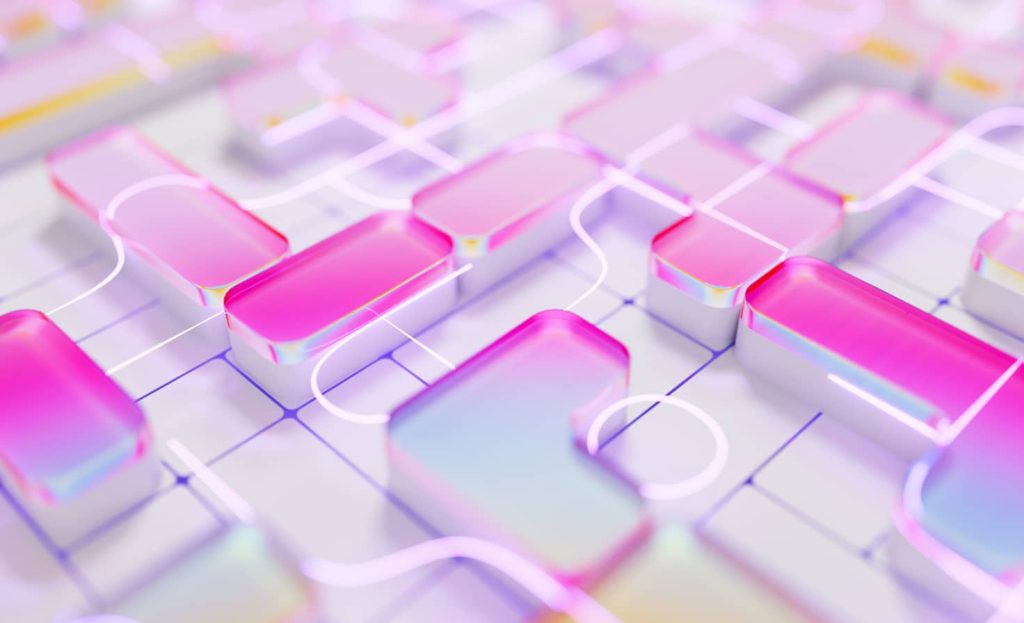Recent advancements have improved sensor accuracy, wireless connectivity, integration with cloud computing platforms and miniaturisation, making BCIs more comfortable and accessible. With artificial intelligence, BCIs are becoming smarter, more intelligent, and more intuitive.
In this expert opinion, Oleh Chaplia, Senior Software Developer at ELEKS, discusses the latest advancements in brain-computer interface technology.
What modern BCIs exist?
Brain-computer interfaces enable communication between the brain and external devices. Based on their invasiveness, BCIs can be classified into three categories: non-invasive, partially invasive, and invasive.
Non-invasive BCIs measure brain activity externally from the scalp, offering safety, affordability, and ease of use but at lower spatial and temporal resolution. Partially invasive BCIs involve electrodes placed directly onto the cortical surface beneath the skull, providing improved signal clarity and being less risky than deep implants. Finally, invasive BCIs require surgically implanted intracortical electrodes directly within brain tissue, yielding the highest signal precision but carrying significant medical risks such as infection or rejection, typically reserved for critical medical applications.
What are the current advancements in BCI technology?
BCI technology has accelerated in the past two years with new techniques and AI tools. Non-invasive systems are becoming more powerful. For example, a 2024 Carnegie Mellon study combined a wearable EEG cap with focused ultrasound neuromodulation to create a "bidirectional" BCI (recording and stimulating the brain). In tests, 25 subjects could spell words with a visual BCI speller, and the ultrasound pulses significantly boosted BCI accuracy. This shows that targeted neuromodulation can improve signal quality in scalp EEG BCIs.
Machine learning and deep neural networks are also enhancing decoding. Researchers at UT Austin recently built a "universal" BCI decoder that self-calibrates to any user, allowing subjects to play a complex video game (racing a car) by thought without per-user training. These advances point to a new era of BCIs that are non-invasive, AI-driven, and adaptive.
Synchron is advancing brain-computer interface technology with a minimally invasive device called the Stentrode, inserted via the jugular vein to the brain’s motor cortex. This avoids open-brain surgery, reducing risks and recovery time. In collaboration with Nvidia, Synchron is developing "Chiral", an AI-powered model trained on extensive neural data, enhancing real-time decoding. Recently, a patient with ALS successfully used Synchron’s BCI, integrated with smart-home systems and visualised through the Apple Vision Pro headset, demonstrating significant potential for improving autonomy and quality of life.
Researchers at the University of California, San Francisco (UCSF), developed a BCI enabling a paralysed man to control a robotic arm using only his thoughts. The man could manipulate objects by imagining specific movements, thanks to tiny sensors implanted in his brain. The BCI device features artificial intelligence that adapts to minor brain activity changes over time, maintaining functionality for up to seven months without external adjustments. The fusion of human and AI learning marks an advanced phase for BCIs and expresses confidence in future refinements.
What to expect in the future?
In the future, brain-computer interfaces (BCIs) are expected to become more natural, intuitive, and adaptable, allowing users to control devices with minimal training. Medical procedures will be less invasive, reducing risks and making BCIs more accessible. These systems will integrate seamlessly with everyday technology, enabling people to manage their environment or communicate effortlessly through thought. Devices will be reliable for long-term, home-based use, offering greater independence for individuals with disabilities.
As BCIs become more affordable and widespread, new ethical challenges around privacy and cognitive freedom will emerge, requiring careful regulation and public awareness. Beyond medical uses, BCIs may also find applications in gaming, education, and productivity, blending human thought more closely with the digital world.
- Non-invasive & neuromodulation: Advances in brain signal sensing and stimulation techniques are boosting the accuracy and reliability of non-invasive BCIs. Researchers are exploring wearable systems and methods to enhance brain signals for improved communication and control.
- AI-enhanced decoding: Artificial intelligence is transforming BCIs by enabling instant adaptation to users without the need for lengthy calibration. New models can decode imagined speech, handwriting, and fine motor intentions, making interaction more natural.
- High-resolution implants: Next-generation implants with dense electrode arrays are achieving higher precision in decoding brain activity. Recent trials have shown individuals using thought alone to manipulate robotic devices and generate text, marking major progress toward seamless mind-machine control.
- Wearable BCI devices: Lightweight, consumer-friendly BCIs are emerging, including wearables like headsets, earbuds, and headbands designed for gaming, wellness, and productivity. Though less precise than implants, they are becoming more affordable and accessible for everyday use.
- Cloud and network integration: BCIs are increasingly connecting to cloud-based platforms, allowing real-time neural data processing, remote updates, and integration with smart home systems. This shift enables more powerful and scalable applications without heavy on-device computing.
What are the next steps after BCIs?
The development of BCIs marks only the beginning of a deeper connection between the human brain and technology. In the future, researchers envision brain-to-brain interfaces, where thoughts or emotions could be shared directly between individuals, offering entirely new forms of communication.
Cognitive enhancement is another emerging goal, with BCIs potentially improving memory, attention, or even learning capabilities through targeted stimulation and feedback. As devices shrink and become less invasive, brain interfaces may blend seamlessly into everyday wearables like smart glasses or headphones, enabling discreet and continuous interaction with digital environments.
Beyond reading brain signals, the next generation of BCIs may also stimulate the brain, creating closed-loop systems that help treat mental health conditions, boost rehabilitation, or optimise cognitive performance. However, as these technologies advance, ensuring neural privacy, securing brain data, and protecting cognitive autonomy will become critical challenges that society must address.

FAQs
BCIs detect electrical or metabolic activity in the brain using sensors, then translate these signals into commands through AI models and algorithms.
Newer BCIs, especially implanted ones, can operate reliably for months and are being developed to last even longer for daily, at-home use.
Non-invasive BCIs are safe and widely used. Invasive systems carry more risks due to surgical implantation but offer higher precision for medical applications. For all BCIs, challenges include ensuring user privacy, security of brain data, and ethical concerns about mind-machine integration.
Current BCIs can interpret specific patterns related to movement, attention, or intent, but they cannot read detailed thoughts or memories. However, as technology advances, privacy and ethical safeguards will become increasingly important.
Older systems needed hours of calibration, but AI-powered BCIs are becoming more adaptive and require minimal user training, often adjusting to individuals in real time.
Related insights







The breadth of knowledge and understanding that ELEKS has within its walls allows us to leverage that expertise to make superior deliverables for our customers. When you work with ELEKS, you are working with the top 1% of the aptitude and engineering excellence of the whole country.

Right from the start, we really liked ELEKS’ commitment and engagement. They came to us with their best people to try to understand our context, our business idea, and developed the first prototype with us. They were very professional and very customer oriented. I think, without ELEKS it probably would not have been possible to have such a successful product in such a short period of time.

ELEKS has been involved in the development of a number of our consumer-facing websites and mobile applications that allow our customers to easily track their shipments, get the information they need as well as stay in touch with us. We’ve appreciated the level of ELEKS’ expertise, responsiveness and attention to details.

